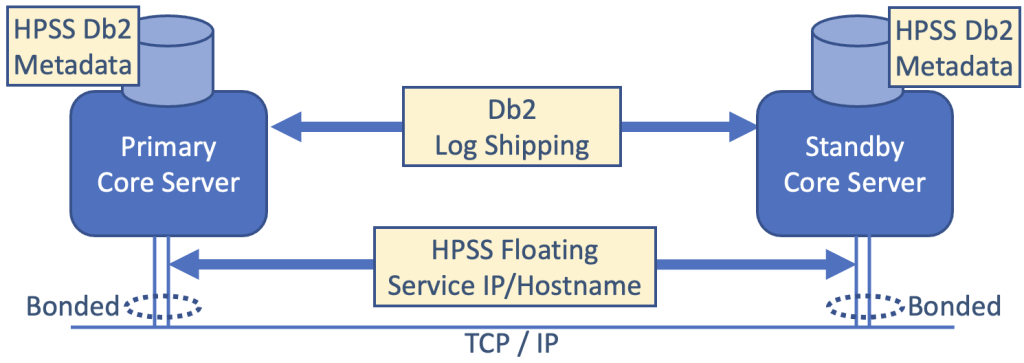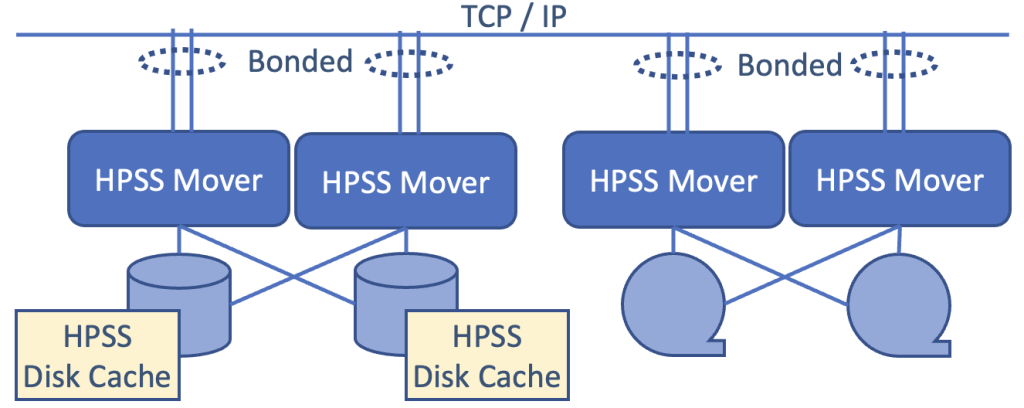The Core Server portion of HA HPSS includes the configuration of a standby HPSS Core Server and associated Db2 metadata storage, as well as the configuration and testing of HPSS Core Server failover-with-manual-approval functionality.
Db2 log shipping protects HPSS metadata against a broad range of failures including hardware issues, network disruptions, and even full-site outages. It helps minimize downtime in the event of such incidents. Db2 log shipping replicates the HPSS Db2 metadata to a standby HPSS Core Server, which can be installed locally or even at a remote facility.
HA Core Server details include:
- Two HPSS Core Server machines: one primary and one standby
- Metadata on the primary server is synchronized to standby server
- Negligible impact on performance
- Primary computer failure results in the standby computer assuming the IP/Hostname of the service interface and restarting HPSS


